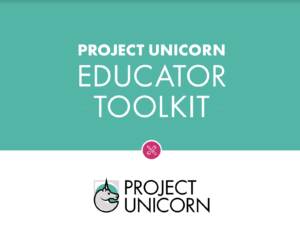How to Talk to Parents About Your School’s EdTech

At a recent PTA meeting for an elementary school, the parents considered a plan to donate thousands of dollars to fund new technology purchases for the school. While many were excited, in the middle of the discussion, one parent spoke up with tears streaming down her face, terrified at the notion of her child spending hours in front of a screen. To her, technology in the classroom simply equated to digital worksheets, videos replacing teacher instruction, and more time in test prep mode. This parent’s notion of the potential investment in educational technology was deciding to create classroom environments characterized by isolation, passivity and information consumption.
I followed up with some of the parents who had echoed these concerns during the discussion. They described the kind of learning environment they hoped their children could have. The parents wanted their children to feel comfortable participating and sharing their voice and perspective. They mentioned wanting children in settings that encourage curiosity and investigation. They hoped their students would have opportunities to collaborate with others. These parents wanted their children exposed to experiences beyond the classroom walls. They emphasized the need for children to be prepared to tackle whatever challenges they may face in middle school, high school and beyond. And, most notably, these parents wanted their kids to be excited about learning.
While there is great variation among classrooms, schools and districts in structures and approaches, most educators strive for exactly these kinds of engaging, purposeful, responsive, dynamic and even playful learning environments for their students. The struggle is often finding the means to make this goal possible given the demanding constraints of time, money and state standards. But even if a district is achieving these goals, parents may not see that, and their worries may linger. Below, I’ve drafted some talking point for educators and EdLeaders who are facing these concerns, along with some tools you can use to demonstrate EdTech’s potential efficacy.
Tools to Create and Express
Technology gives students the tools to bring to life what can only be imagined in the physical world. Students can show their learning in expanded ways by combining and utilizing multiple media, saving multiple versions, and having their creations shared beyond the classroom walls. The ability to make, edit and combine text, graphics, sound and video allows for multiple variations in student expression. This appeals to students with different learning styles and preferences, and allows for multiple iterations of edit and review from teachers and peers.
Educators are often limited to showing student understanding through a response to a question on a particular concept or fact. The measure of student comprehension is confined to the boundaries of that question. Teachers and parents have bemoaned for years how tests do not capture what their students know and can do. Alternatively, when students are allowed, encouraged and at times even required to be evaluated on self-created artifacts of their learning, teachers see student expression of understanding. These artifacts and products provide better insight into each student’s range of comprehension, content knowledge and skills.
Moreover, creation is truly the student’s opportunity to manifest understanding. The intellectual demands for rigor and depth are much higher during acts of creation. The student “creator” must take into account what they are trying to say, the audience to whom they are saying it, and ensure that they effectively convey that message. Creation allows–even requires–students to exercise choice, empowering them to have their unique vision and voice included in demonstrating their content mastery and skills.
Tools to Demonstrate:
- Canva: Students can use Canva to create infographics, which are visual representations of information or data. Students research, explain their information in writing, and use digital literacy skills to create the finished product.
- Wondershare Filmora: Students, parents and teachers have reported this video creation and editing tool as a wonderful balance of easy to use and fun extensions. It does not require technical expertise but it does provide a wide variety of special effects.
- Storybird: Creating a book is a real way to have students realize they have a voice and many stories to tell. This easy-to-use platform enables students to combine text, photos, art and other elements to author and publish their stories.
Connecting Students to People and Places Around the Globe
Technology can bring the world to a student’s fingertips. Our connectivity has dramatically increased the number of people with which students can connect. It has allowed that connection to happen simultaneously at great physical distances. Students can interact with peers all over the globe through voice, video, sharing of projects and documents, and the ability to respond to, question and edit one another’s work.
In this globally-connected world, it is integral for students to understand their own community, create representations of their own experiences, and present them to people in other places. Expressing their own experiences to others and listening and learning about those same things gives students both voice and exposure. Through this dialogue, students can recognize a common humanity in the questions they are asking and the problems they are facing.
Tools to Demonstrate:
- Global Scholars: This free middle school program combines the best of project-based learning, community engagement and technology. Students work in small teams with local peers on a project to study and improve their community and connect and collaborate with other teams on other continents doing the same. It combines local civics, global interaction, digital literacy and project-based learning.
- Taking it Global: Connecting students with peers around issues both local and global, this platform provides both a sense of community and the tools to take action. Students and teachers can find others with similar concerns and determine their level of engagement on the challenge or task.
- Google Expeditions: This is a virtual reality resource that allows students to go on immersive field trips all over the universe. Using virtual reality glasses, mobile phones and the Expeditions app, students can visit remote terrain, exciting landmarks, and even venture to outer space. With a router connection, groups of students can experience a trip together, with individuals exploring and navigating the destination as they like.
Collaboration and Engagement
Students can more easily collaborate and work with one another using digital tools. Technology allows students to see each other’s work, and to respond in real time. Using devices and collaborative technology-based programs, students are able to work on a common problem or issue, capture data and immediately distribute to a group, analyze that data, and work on presentations synchronously or asynchronously, regardless of location.
Digital natives presume that interaction and collaboration are components of most experiences. Their learning is no different. Most students would agree that playing a game is preferable to listening to a lecture. Learning any subject is a journey that can now be turned into a game. Technology has increased the speed of production on these games, and the ability to utilize these games to provide feedback to teachers, students, and parents. Publishers and teachers have produced a wide array of gamified learning experiences ranging from reinforcing specific grammar skills to the navigating the span of history.
Tools to Demonstrate:
- Padlet: With support for a wide variety of languages, file types and devices, this tool can be used as a repository for individual or group thinking. Students love the instant feedback they can provide each other and the ability to structure contributions in a variety of ways makes it adaptable to many situations.
- Flipgrid: Students are already part of many communities. This platform lets students and teachers create and design communities around an identity, interest or cause of their selection. It is simple to start and able to scale up to broad-use cases.
- Vocabulary.com: By turning word mastery into a game, with both individual and school rewards, this tool makes learning new words both meaningful and fun. It can be used as a stand-alone for some students, a system for classes or schools, or embedded into a learning management system for inclusion in lesson plans.
Closing a Different Kind of Digital Divide
Most educators have similar goals: they want students to have the skills, knowledge and motivation to successfully face the challenges of the future. Doing that is easier said than done. Previous generations of teachers could not imagine a world where we can carry in our pockets instantaneous access to limitless information, and contemporary educators must prepare students to face the challenges of the future without knowing what those challenges are. Education technology is a powerful tool to realize these hopes.
For education technology to reach its full potential in preparing students for their futures, dialogue must begin with aspirational and respectful engagement among all stakeholders including parents, teachers, administrators and students. EdTech advocates must reach that parent who was brought to tears by the idea of more technology in her child’s life. When students are creating, connecting, and collaborating with technology as the norm, discussions on technology investments will have eager smiles replace the tears of trepidation.
For more, see:
- What Parents Need to Know About Project-Based Learning
- Partnering with Parents on SEL
- Using Technology to Build Partnerships with Parents
Stay in-the-know with all things EdTech and innovations in learning by signing up to receive the weekly Smart Update.






0 Comments
Leave a Comment
Your email address will not be published. All fields are required.